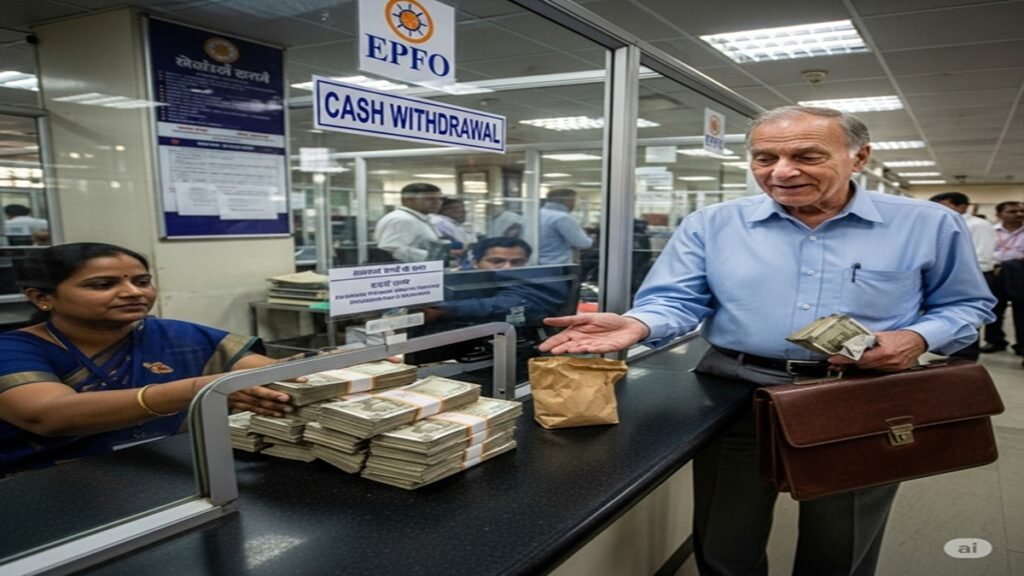The EPF (employees provident fund) is a retirement savings scheme, managed by the EPFO (Employees’ Provident Fund Organisation). Under the scheme, both the employee (12% of the basic pay) and the employer (3.67% of the employee’s basic pay) contribute.
Although this amount may seem small at first, it helps members build a substantial retirement corpus if they continue investing in the fund until their retirement at the age of 58.
EPF is different from other savings and retirement fund options like the National Pension System (NPS) and Public Provident Fund. While PPF and NPS provide flexible investment options, EPF is a mandatory contribution which automatically creates discipline.
Along with this, EPF also provide fixed interest from the government. Additional facilities like pension and insurance cover are also added through EPS.
How is EPF contribution made?
According to EPF rules –
The employee deposits 12% of his basic salary in EPF.
The employer also contributes 12% of the basic.
But out of this, 8.33% goes to EPS (Employees’ Pension Scheme) and the remaining 3.67% comes into the EPF account.
EPS provides the benefit of pension in the future.
Currently, 8.25% annual interest is being given by the government on EPFO.
Let’s understand with an example –
Suppose an employee’s total monthly salary is Rs 64,000. In this – basic salary is Rs 31,900, HRA Rs 15,950 (50% of basic), and other allowances are Rs 16,150.
Now calculate EPF contribution:
12% of basic pay = Rs 3,828 per month
3.67% of basic pay = Rs 1,172 per month
That is, a total of Rs 5,000 is being deposited in the EPF account every month.
Long-term benefit
If the person starts the job at the age of 25 and makes regular contributions till the age of 58 (33 years), then his EPF account can write a golden future.
So, assuming that salary will increase by at least 10% every year, the money going into EPF will also increase every year. It will keep getting 8.25% interest continuously.
Result: By the time of retirement i.e. at the age of 58, the employee will have a whopping retirement corpus of about Rs 3.5 crore.
During this period, the total money invested in the EPF comes to Rs 1.33 crore.
Benefit of EPS (Employees’ Pension Scheme)
Along with the EPF, 8.33% contribution made by the employer goes to EPS. This gives the employee the benefit of pension.
According to the current rules, the minimum pension in EPS is fixed at Rs 1,000 per month.
However, the amount of pension depends on many factors like your pensionable salary and period of service.
Why is EPF a safe investment?
-EPF is completely government-backed.
-It is not affected by market fluctuations.
-Interest rates may keep changing, but it is a very reliable means for retirement.
The bottom line…
If you contribute to EPF in a disciplined manner from the beginning, your retirement can be very comfortable. A monthly investment of Rs 5,000 and a part of the salary increasing every year can create a corpus of up to Rs 3.5 crore. Also, with the help of EPS, you will get pension support after retirement.


